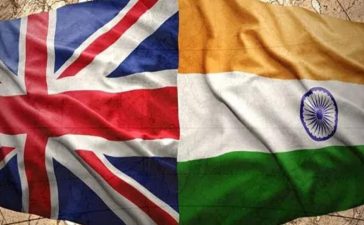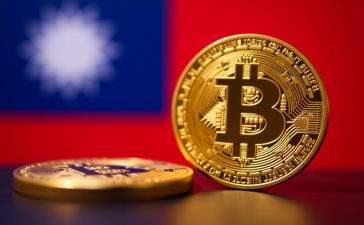
It is technically possible for Apple to shift iPhone production entirely out of China to another nation or combination of nations within a five-year timeframe, but it will be a highly complex and challenging process for a variety of reasons.
Apple’s iPhone production in China is deeply integrated into the country’s manufacturing ecosystem, which includes a vast network of suppliers, manufacturers, and logistics providers. Moving production out of China would require Apple to establish new partnerships, build new supply chains, and navigate a range of geopolitical and regulatory challenges.
Additionally, shifting production to a new location or combination of locations could result in increased costs for Apple, as it would need to invest in new infrastructure, train new employees, and navigate different labor laws and regulations and various contract and agreements. (Access various manufacturing contracts and agreements and service level term sheets and evaluations forms used in industry, here)
It could also take Apple several years to ramp up production in new locations and establish the same level of efficiency and scale as Apple’s existing operations in China, staffed with hundreds of thousands of workers capable of fine dexterity and fine-tuned manufacturing process instructions (MPI), which are held tightly and not transferred among competing contract electronics providers.
In your search results, you can add more Geographies, add more Services plus Industries to customize your search.
All of the above aside, Apple has been in the news making efforts to diversify its manufacturing operations and reduce its dependence on China. Apple has already begun moving some production to other countries, such as India, and has reportedly been exploring options to shift more production to Vietnam, Thailand, and other Southeast Asian manufacturing countries.
Ultimately, the feasibility analysis and timeline for moving iPhone production, and production of other Apple products, out of China will depend on a range of factors, including Apple’s strategic priorities, availability of alternative manufacturing locations, and the ability to manage risks and costs associated with the transition.
Alternatives to China
Most can agree China’s technology supply chain ecosystem is highly advanced and integrated, making it challenging for any single nation in Southeast Asia to compete on the same level as China has for Apple. However, a combination sourcing strategy of three or more nations with complementary strengths could potentially challenge China’s position in the region.
Singapore is already a leading technology hub in Southeast Asia, with a highly skilled workforce and advanced infrastructure. It has a strong focus on research and development, and is known for its innovation in areas such as fintech and smart city solutions, connected devices, and the Internet-of-Things (IoT).
Next is Malaysia. Malaysia has a well-established manufacturing sector, with a particular focus on electronics and semiconductors. It also has a strong tech supply chain and logistics network, making it an ideal location for production and assembly.
Then there is Vietnam. Vietnam has a large and growing population of tech-savvy young people, as well as a growing economy. It has a strong focus on exports, particularly in the area of electronics and telecommunications, and is attracting increasing FDI investment from tech companies around the world. Even China increased Vietnam investments the past few years.
Together, these three nations could create a complementary ecosystem of innovation, production, and export that could challenge China’s dominance in the region? Or could they?
The Indian sub-continent is a prominent and significant nation in South Asia and the world. India has a rich history, diverse culture, and a rapidly growing economy, and it would be inaccurate to ignore its importance in any meaningful discussion or analysis.
I have written extensively on India’s manufacturing supply chain capabilities for years and challenges cited often by western manufacturing clients and executives with operations in India. Currently, India is not the single, best solution for Apple. At least not right now. In a few year’s time? Perhaps.
In any case, moving Apple’s supply chain from China will require a significant amount of investment, coordination, and cooperation between Apple and many nation(s), as well as the development of new technologies and capabilities to compete with China’s highly advanced supply chain tech systems ecosystem used by components distributors.
Staffing workers
Of the nations mentioned above, only India can staff large factory compounds and campuses with 300,000+ workers like the giant campus in central China, owned by Foxconn, an original design manufacturer (ODM) supplier for Apple. None of the other three nations – Singapore, Malaysia, nor Vietnam – can do this. (Read: Comparing CM, CEM, EMS, ODM providers)
However, there are other factors to consider besides population when it comes to building a robust supply chain ecosystem, such as infrastructure, education, and government policies.
In your search results, you can add more Geographies, add more Services plus Market/Industry specific criteria.
In looking at a product like Apple’s iPhone, there is no one nation that can compete with China’s manufacturing supply chain ecosystem. Any combination of alternative nations mentioned in this article will require layers of complexity for managing multiple time zones, multiple currencies, multiple laws and regulations, plus increased shipping and transportation costs between the nations which will ultimately make for longer supply chains, and introduce new challenges while further emphasizing some existing challenges – depending on point of consumption.
SEE ALSO
Request-for-quote (RFQ), request-for-information (RFI) guidance
However, when considering the goal of building an electronics supply chain ecosystem that can challenge China’s position in the electronics industry, then it would require collaboration and specialization among multiple countries in the region.
For instance, countries like Indonesia and the Philippines have larger populations than Singapore, Malaysia, and Vietnam, and could potentially contribute to the manufacturing workforce needed to produce iPhones.
But building a large factory complex with 300,000+ workers is just one aspect of a supply chain ecosystem.
There are many other factors to consider, such as research and development capabilities, logistics infrastructure, and government policies.
Industry is important to Chinese leaders, especially tied to manufacturing, and particularly, electronics and technology. Additionally, as China’s BRI further develops and matures the network will place emphasis on China’s position extending to western Europe while building relations across the Earth’s largest land mass (and largest resources base), while allowing lower-end manufacturing from China to then exit and move into BRI regions to seed and enable economic growth.
China’s wages are rising for several reasons, one being China manufacturing labor is moving higher up the value-add ladder. (For various white papers on new product launch best practices, RFQ checklists, or 19 questions to ask suppliers plus more, click here.)
China also has the Yangtze river, allowing for inexpensive raw materials and freight transport more economically than railroad while extending deep into other provinces.
Ultimately, building a robust supply chain ecosystem alternative to China’s today requires Apple developing a long-term strategy plus cooperation and collaboration among multiple countries.
What about India?
Meanwhile, India offers some advantages to global brand manufacturers like Apple that China may not be able to fulfill moving forward.
India has a large consumer market population of over 1.4 billion people, arguably making it the most populous country in the world. This presents a huge consumer market for global manufacturers like Apple, which can tap into this market to sell their products and services.
India’s manufacturing labor costs are lower compared to China, which can make it more cost-effective for global manufacturers to set up manufacturing operations in India. Conversely, India’s labor contribution is also lower on the manufacturing labor value-add ladder.

Today, there are manufacturing supply chain China-alternative strategies, with ROI dependent on scale. Read more about these alternatives.
Meanwhile, the Indian government has introduced several policies and incentives to attract factories and foreign investment and promote manufacturing in the country, such as the ‘Make in India’ initiative and production-linked incentive (PLI) scheme. These policies provide financial incentives and tax breaks to global manufacturers who set up manufacturing operations in India.
SEE ALSO
Build costing modelers for contract electronic pricing analysis and negotiations
Years ago I met with Rajeeva Ratna Shah, then Secretary to government of India, Ministry of Commerce and Industry. Among many topics, we discussed challenges facing India’s electronics sector. At that time, the following were deemed essential activities and opportunities for India to face challenges creating a viable electronics industry, then:
- International and regional ESDM industry organizations
- Indian government
- Private sector
- Universities and technology/research centers
Nearly a dozen years later, there has been some positive change yet India must continue to seek to be a successful destination for contract electronics industry, referred to in India, as electronics services and design manufacturing (ESDM). Read more about steps India must take here, and this article written for an Indian think tank, here.
Ultimately, the decision of whether to manufacture in India or China depends on several factors, including the specific needs and priorities of the manufacturer, the cost and availability of resources, and the regulatory and political environment. Whatever the outcome, technology and manufacturing capabilities in Asia will continue to evolve.
Read more of my comments about Apple and India in this article on FT.com. Connect with Mark Zetter on Linkedin.
Get a custom list of providers (It’s free)
Venture Outsource has the largest, global database of contract electronics capabilities and services. Electronic OEM professionals reading this and wanting help locating contract electronic service providers matching your program and end market, Venture Outsource offers a free service. Speak with a Provider Advisor. Advisors have access to detailed information on listings in our global database and can help you compare provider service capabilities to better match your program needs. Advisors also have intelligence on specific providers, plus info on emerging industry trends and best practices to share with you.













